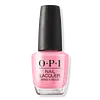Holo Taco Shady Navy Versus OPI Nail Lacquer
What's inside
What's inside
 Key Ingredients
Key Ingredients

 Concerns
Concerns

 Ingredients Side-by-side
Ingredients Side-by-side

Butyl Acetate
MaskingEthyl Acetate
PerfumingNitrocellulose
Acetyl Tributyl Citrate
MaskingIsopropyl Alcohol
SolventAdipic Acid/Neopentyl Glycol/Trimellitic Anhydride Copolymer
Stearalkonium Bentonite
Gel FormingAcrylates Copolymer
Styrene/Acrylates Copolymer
Silica
AbrasiveBenzophenone-1
UV AbsorberTrimethylpentanediyl Dibenzoate
Diacetone Alcohol
MaskingPhosphoric Acid
BufferingCI 77510
Cosmetic ColorantCI 77891
Cosmetic ColorantCI 77266
Cosmetic ColorantCI 19140
Cosmetic ColorantCI 77499
Cosmetic ColorantButyl Acetate, Ethyl Acetate, Nitrocellulose, Acetyl Tributyl Citrate, Isopropyl Alcohol, Adipic Acid/Neopentyl Glycol/Trimellitic Anhydride Copolymer, Stearalkonium Bentonite, Acrylates Copolymer, Styrene/Acrylates Copolymer, Silica, Benzophenone-1, Trimethylpentanediyl Dibenzoate, Diacetone Alcohol, Phosphoric Acid, CI 77510, CI 77891, CI 77266, CI 19140, CI 77499
Butyl Acetate
MaskingEthyl Acetate
PerfumingNitrocellulose
Tosylamide/Epoxy Resin
Acetyl Tributyl Citrate
MaskingIsopropyl Alcohol
SolventStearalkonium Bentonite
Gel FormingSilica
AbrasiveBenzophenone-1
UV AbsorberTrimethylpentanediyl Dibenzoate
Diacetone Alcohol
MaskingPhosphoric Acid
BufferingCI 77891
Cosmetic ColorantCI 77266
Cosmetic ColorantCI 77510
Cosmetic ColorantCI 77499
Cosmetic ColorantIngredients Explained
These ingredients are found in both products.
Ingredients higher up in an ingredient list are typically present in a larger amount.
Acetyl Tributyl Citrate is a fragrance.
Benzophenone-1 absorbs UV.
We don't have a description for Butyl Acetate yet.
Ci 77499 is also hydrated iron III oxide. It is created from mixing red and black iron oxides. This helps give shades of darkness to a product.
Iron III oxides are classified as inorganic chemicals for coloring.
This ingredient is used to impart a blue color. It is not water-soluble.
It goes by two different names:
1. Ferric Ferrocyanide: a synthetic dark blue pigment
2. Ferric Ammonium Ferrocyanide: a synthetic blue pigment, also called Prussian blue
In the EU, both of these colors must be labeled as 'CI 77510'.
Learn more about CI 77510Ci 77891 is a white pigment from Titanium dioxide. It is naturally found in minerals such as rutile and ilmenite.
It's main function is to add a white color to cosmetics. It can also be mixed with other colors to create different shades.
Ci 77891 is commonly found in sunscreens due to its ability to block UV rays.
Learn more about CI 77891We don't have a description for Diacetone Alcohol yet.
Ethyl Acetate is a fragrance.
Isopropyl Alcohol is more commonly known as rubbing alcohol. It is most commonly used as a solvent, meaning it helps other ingredients dissolve.
This ingredient is an astringent alcohol. Astringent alcohols may also irritate skin as they high amounts may strip away your skin's natural oils.
Other types of astringent alcohols include:
According to the National Rosacea Society based in the US, you should be mindful of products with these alcohols in the top half of ingredients.
Any type of sanitizing product will have high amounts of alcohol to help kill bacteria and viruses.
Learn more about Isopropyl AlcoholWe don't have a description for Nitrocellulose yet.
Phosphoric acid is used to adjust the pH of products.
Silica, also known as silicon dioxide, is a naturally occurring mineral. It is used as a fine, spherical, and porous powder in cosmetics.
Though it has exfoliant properties, the function of silica varies depending on the product.
The unique structure of silica enhances the spreadability and adds smoothness, making it a great texture enhancer.
It is also used as an active carrier, emulsifier, and mattifier due to its ability to absorb excess oil.
In some products, tiny microneedles called spicules are made from silica or hydrolyzed sponge. When you rub them in, they lightly polish away dead skin layers and enhance the penetration of active ingredients.
Learn more about SilicaWe don't have a description for Stearalkonium Bentonite yet.
We don't have a description for Trimethylpentanediyl Dibenzoate yet.
CI 77266 is a high-purity pigment used to create an intense black color in cosmetics. It is made up of fine particles of pure carbon. This ingredient is also often listed as Carbon Black in ingredient lists.
You'll likely find this ingredient in mascaras, eyeliners, brow products, and eye shadow.
In the US, this ingredient can only be used if it meets strict FDA specifications. Certain versions even require batch-by-batch certification after extensive safety evaluation.
In the European Union, this ingredient is permitted as a colorant and classified as a "nanomaterial" based on its particle size (meaning it requires deeper assessment).
The EU Scientific Committee on Consumer Safety (SCCS) has reviewed nano-sized carbon black specifically and concluded that it does not pose a risk to human health when used in cosmetic products applied to healthy, intact skin and formulated to avoid inhalation.
Studies support this regulatory stance. Laboratory studies on nano-carbon black show potential for cytotoxicity and inflammatory effects in immune cells; it is important to highlight these findings are based on in vitro (not done on a living organism) testing or inhalation scenarios rather than normal topical cosmetic use.
Occupational studies involving industrial workers exposed to airborne carbon black have not shown a clear link between cumulative exposure and cancer risk. These findings are not directly applicable to cosmetics; cosmetic formulations bind pigments within creams, gels, and liquids that are not inhaled.
Overall, evidence shows that this ingredient is safe under regulatory guidelines and purity standards, especially when formulated to avoid airborne exposure.
Even with regulatory approval and a long history of use, some consumers might prefer to avoid ingredients that are petroleum-derived or that fall under the “nanomaterial” category.
Choosing whether to use CI 77266 isn’t necessarily about safety alone; it can also be about personal philosophy, comfort level with synthetic versus natural ingredients, and how much weight you place on ongoing research and regulatory oversight.
Makeup is highly individual, and personal preference plays an important role in deciding what feels right for you.
Learn more about CI 77266